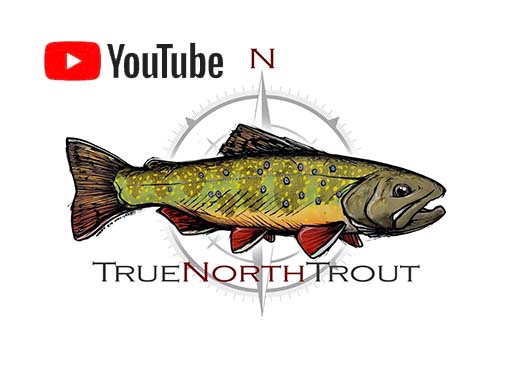
The Madam X
The following is the first in T|N|T‘s four-part series on tying and fishing hopper flies, and on the the joys of Michigan midsummer trout fishing. Look for more installments in upcoming days.
With the arrival of midsummer and the “dog days” that follow comes one of the best opportunities of the season to catch a trophy size trout on a dry fly. No, I am not speaking of the celebrated “Hex” (Hexagenia Limbata) or Giant Michigan Mayfly that has recently begun its annual emergence on our northern rivers, but a much less famous (though no less tempting) morsel for the hungry trout in search of a substantial meal: the lowly grasshopper.
Grasshoppers, along with ants, crickets, beetles, spiders and various other terrestrial insects, are active in the grasses and trees lining the banks of Michigan trout streams beginning in early spring, and furnish easy calories for trout when they fall or are blown by the wind into the water. Hoppers become of greatest interest to trout in the hottest, driest weather of the year, from mid-July through mid-September. By this time, the hoppers born in the spring have had all season to mature, growing to as much as two inches in length.
Hoppers crawl up onto blades of grass in the early morning and wait for the sun to warm their bodies. They typically start moving around noon and remain active, flying from place to place to feed throughout the afternoon, which means that the best time to try your hopper flies is right through the heat of the day. Look for deeply undercut banks with tall overhanging grass on the banks above them. Hopper flies should be cast as close to these banks as possible, and should land with a bit of a “splat”, as this imitates the plight of the natural hoppers that get knocked or blown into the water. If a fish is there and looking up, the response will be near instantaneous, and the fisherman may get a nice surprise, for even the largest trout will regularly attack a hopper presented in this manner.
Hopper flies should be cast as close to these banks as possible, and should land with a bit of a “splat”, as this imitates the plight of the natural hoppers that get knocked or blown into the water. If a fish is there and looking up, the response will be near instantaneous, and the fisherman may get a nice surprise, for even the largest trout will regularly attack a hopper presented in this manner.
Hopper fishing is not nearly the technical business that hatch-matching can be, but the well-prepared angler will nevertheless want to carry several different hoppers for various conditions. Accordingly, this article is the first in a series, each of which will feature a different hopper pattern. These flies are fun to tie and an absolute blast to fish—their only possible downside is that they may keep you so busy catching fish all day that you’re all worn out before the evening rise even starts, but that’s a risk I’m willing to take…aren’t you?
Madam X
Hook: Standard dry fly, size 8 to 12
Thread: 6/0, olive
Tail: Elk hair, natural
Body: Olive dry fly dubbing
Underwing: Elk hair, natural
Head/Overwing: Elk hair, natural
Tying Instructions:
1. Start the thread about 1/8” behind the hook eye and wrap to the hook bend.
2. Cut and stack a small clump of elk hair. Tie it in at the bend, with the hair tips rearward, protruding about half a hook-gap width past the bend. Bind the hair butts along the length of the rear half of the hook shank. Clip the butts at the halfway mark and return the thread to the bend.
3. Apply dubbing uniformly over the underbody.

Step #4
4. Cut and stack another clump of elk hair, roughly 1 ½ times the diameter of the clump you used for the tail. Tie in this clump so that its tips are even with the tips of the tail hairs. Clip the hair butts and bind them securely. Apply cement to the thread wraps, then advance the thread to a point just behind the hook eye.

Step #5
5. Cut and stack a third clump of elk hair about 1 ½ times the diameter of the clump used for the underwing. Measure and cut the hairs to a length that is equal to the length of the hook shank. Tie the clump in just behind the hook eye with its tips facing forward—that is, projecting out past the hook eye. Bind the butts very firmly! Leave the thread hanging at the point where you tied in the underwing when you finish this step.
6. Grasp the entire clump of hair and pull it back toward the rear of the hook. Pinch the hairs at the point where your thread is hanging and bind them very firmly to create the bulbous head and flared overwing.
7. Tie in two lengths of rubber leg material on either side of the thread collar to create the “X” legs that give this pattern its name. Whip finish and treat the thread collar with head cement.

